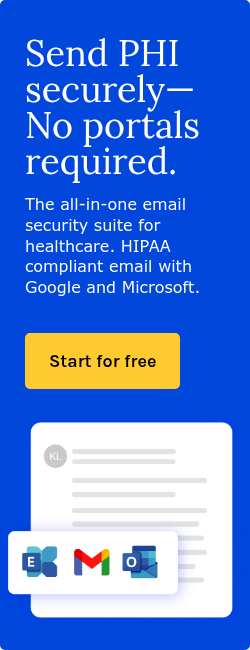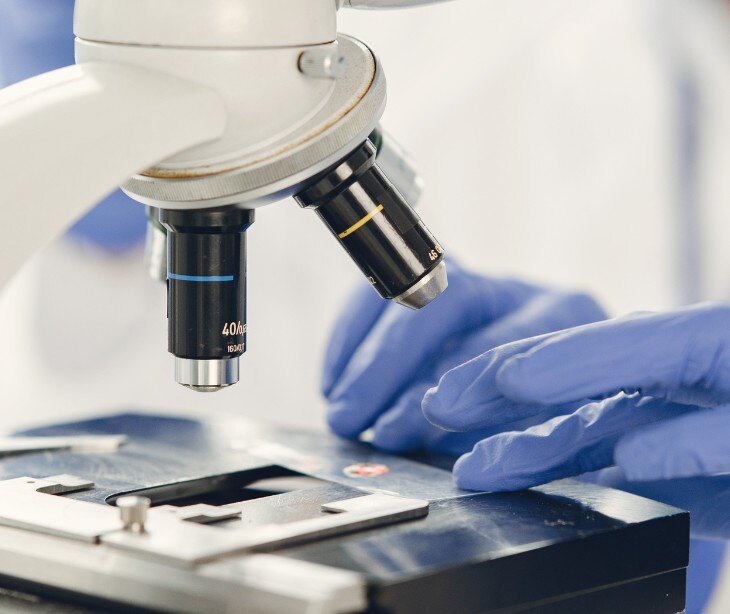4 min read
Does the Safe Harbor method impact how healthcare professionals communicate?
Kirsten Peremore
May 30, 2025

In digital communication, especially via HIPAA compliant email, the Safe Harbor method impacts the content and security measures required. When PHI is transmitted, it must be protected with encryption and access controls to prevent unauthorized disclosure. However, if the data shared is de-identified under Safe Harbor, the communication may not require the same level of security, as the information no longer qualifies as PHI. This distinction affects how healthcare providers handle and share information digitally, potentially reducing the burden of compliance when sharing de-identified data for research or administrative purposes.
Nonetheless, the Safe Harbor method also imposes communication challenges. According to Appendix B from the Sharing Clinical Trial Data: Maximizing Benefits, Minimizing Risk, “The application of Safe Harbor is straightforward, but there clearly are instances in which dates and more fine-grained geographic information are necessary. In practice the Safe Harbor standard would remove critical geospatial and temporal information from the data (see items 2 and 3 in Box B-2), potentially reducing the utility of the data. Many meaningful analyses of clinical trial data sets require the dates and event order to be clear.” Temporal relations needed for understanding patient outcomes might be obscured, complicating communication about patient history or treatment timelines.
What is the Safe Harbor Method?
The Safe Harbor method is a specific de-identification standard defined under the HIPAA Privacy Rule, designed to protect patient privacy by removing identifiable information from health data. It originates from the U.S. Department of Health and Human Services (HHS) regulations, specifically codified in 45 CFR §164.514(b), which outlines two methods for de-identifying protected health information (PHI): the Safe Harbor method and the Expert Determination method.
The Safe Harbor method requires the removal of 18 specific identifiers from a data set, including names, geographic subdivisions smaller than a state, all elements of dates (except year) directly related to an individual, phone numbers, email addresses, Social Security numbers, medical record numbers, and other unique identifying numbers or characteristics. The intent is to ensure that the data cannot be used, alone or in combination with other information, to identify an individual.
The concept of Safe Harbor also aligns with earlier privacy frameworks and recommendations aimed at balancing data utility and privacy protection. Chapter 6 of Beyond the HIPAA Privacy Rule: Enhancing Privacy, Improving Health Through Research provides insight into the reasons for updates to the privacy framework for health research, “Consent (authorization) itself cannot achieve the separate aim of privacy protection. The Privacy Rule, as currently defined and operationalized in practice, does not provide effective privacy safeguards for information-based research…” The National Institutes of Health and other bodies have endorsed Safe Harbor as a baseline for de-identification, recognizing its role in enabling secure data sharing while minimizing re-identification risks.
When the Safe Harbor Method is used
According to the Author Manuscript study on deidentification policy alternatives, “In practice, most healthcare organizations shy away from the expert standard in favor of Safe Harbor. This is not because it is a preferred option, but because 1) there are no standardized methods (or consensus) for satisfying the expert approach within the HIPAA Privacy Rule, 2) there is a lack of readily available open source software for applying methods that mitigate re-identification risk in health information, and 3) health managers often find it difficult to determine the identifiability of health information in practice.”
The Safe Harbor method is applied in healthcare settings whenever there is a need to de-identify PHI to facilitate lawful sharing, use, or disclosure of health data for research, public health, operational, or third-party purpose.
- When healthcare entities share clinical or administrative data with researchers, Safe Harbor de-identification allows the data to be used without requiring patient consent or institutional review board (IRB) oversight, provided the data meets the Safe Harbor criteria.
- De-identified data may be shared with public health authorities or for epidemiological studies to track disease trends without compromising individual privacy.
- Healthcare providers may use de-identified data internally or share it with business associates to improve care quality, conduct audits, or manage healthcare operations without privacy concerns.
- When releasing health data to entities outside the covered entity, such as vendors or partners, Safe Harbor ensures that the data is stripped of identifiers to prevent unauthorized re-identification.
Communication challenges posed by Safe Harbor
One major challenge that comes with the Safe Harbor Method is the loss of data granularity. It requires the removal or generalization of key identifiers such as dates (limited to year only), geographic details smaller than a state, and unique codes. The HHS guidance on HIPAAs deidentification methods notes an example of how stringent the Safe Harbor method can be, “For example, a data set that contained patient initials, or the last four digits of a Social Security number, would not meet the requirement of the Safe Harbor method for de-identification.” The reduction in detail can stand in the way of effective communication about clinical events, treatment timelines, or geographic patterns of disease.
There is also the potential for misunderstanding or misapplication of the Safe Harbor criteria. Healthcare professionals and researchers must be well-trained to recognize what constitutes identifiable information and how to properly de-identify data. The method then complicates longitudinal data communication. Since unique identifiers must be removed or pseudonymized with strict controls, linking data across time points or datasets becomes difficult, impacting communication about patient histories or research participant follow-up.
Safe Harbor and digital communications
Digital communication like HIPAA compliant email is designed to ensure the confidentiality, integrity, and security of PHI. Another excerpt from Sharing Clinical Trial Data: Maximizing Benefits, Minimizing Risk notes the alternative, “As long as the data are appropriately de-identified, many privacy concerns associated with data sharing can be readily addressed.” If the information communicated via email has been de-identified according to the Safe Harbor method, it no longer qualifies as PHI. As a result, the stringent HIPAA email security requirements may not apply, allowing for more flexible communication options without compromising patient privacy.
This distinction affects how healthcare providers manage email communications. For example, sharing de-identified datasets or research results via email may not require encryption or other HIPAA email safeguards if Safe Harbor standards are met. Conversely, any email containing identifiers or information that could re-identify an individual must be handled with full HIPAA compliance, including use of HIPAA compliant email platforms.
How to balance the Safe Harbor Method and effective communication
One approach is to apply the Safe Harbor method flexibly alongside alternative de-identification techniques such as the Expert Determination method. The Expert Determination method allows for more nuanced risk assessments and may retain more data utility while still protecting privacy, enabling more detailed and effective communication.
This can be accompanied by the use of HIPAA compliant platforms like Paubox with built-in security features allows sharing of PHI when necessary, while Safe Harbor de-identification can be applied to datasets intended for broader distribution.
Related: How to choose the right method for deidentification
FAQs
Is de-identification always permitted without patient consent?
Under HIPAA and related regulations, de-identification is generally a permitted use of data by covered entities without requiring patient consent.
How is the risk of re-identification assessed?
The risk must be “very small,” but HIPAA does not define exact thresholds or methods. Expert Determination involves statistical analysis and documented methodologies to measure and minimize re-identification risk in a repeatable way.
What challenges exist in de-identifying free-text clinical data?
Free-text data can contain embedded identifiers that are harder to detect and remove. Methods include rule-based approaches, machine learning, and hybrid techniques to identify and redact personal information from narrative clinical notes.
Subscribe to Paubox Weekly
Every Friday we'll bring you the most important news from Paubox. Our aim is to make you smarter, faster.




